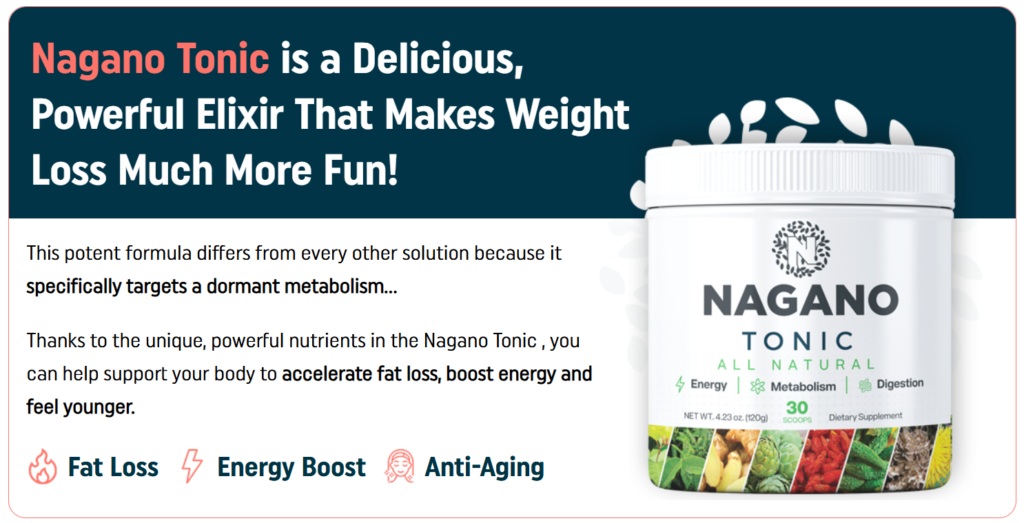🌟Introduction
When we talk about lighting in the workplace, terms like illuminance and luminance often pop up. They sound similar, don’t they? Yet, they refer to two very different but equally important aspects of light — especially when it comes to workplace safety, productivity, and comfort.
Poor understanding of lighting terms often leads to confusion, misjudgment in lighting design, and ultimately unsafe working conditions. In this post, we’ll break down the difference between illuminance and luminance, explore how each affects safety, and learn how to measure and optimize them effectively in your work environment.
So, grab a cup of coffee ☕ and let’s shed some light (pun intended!) on this important topic.
💡 Why Lighting Matters in Safety
Before we jump into definitions, let’s remind ourselves why lighting is so important.
Good lighting:
- Prevents workplace accidents by improving visibility.
- Reduces eye strain and fatigue.
- Enhances mood and concentration.
- Ensures accurate work in detailed or precision-based tasks.
Bad lighting, on the other hand, can lead to slips, trips, and falls, incorrect readings on instruments, and reduced work quality — all of which affect safety and productivity.
That’s why understanding lighting fundamentals like illuminance and luminance isn’t just for engineers — it’s for everyone concerned with safety.
🔦 Illuminance vs. Luminance – The Basic Difference
Let’s start with a simple explanation:
| Term | What It Means | Measured In | Relates To |
|---|---|---|---|
| Illuminance | The amount of light falling on a surface | Lux (lx) or foot-candles (fc) | Light arriving at a surface |
| Luminance | The amount of light reflected or emitted from a surface toward the eye | Candela per square meter (cd/m²) | Light leaving a surface |
In simpler terms:
- Illuminance tells you how much light is hitting your desk.
- Luminance tells you how bright that desk looks to your eyes.
☀️ Example for Better Understanding
Imagine you’re reading a safety manual on your desk.
- Illuminance is the light that your lamp throws onto the pages.
- Luminance is how bright those pages appear to you after reflecting that light.
Even if two desks receive the same illuminance, the luminance might differ depending on the color and texture of the desk’s surface.
For example:
- A white glossy desk reflects more light → higher luminance.
- A dark matte desk absorbs light → lower luminance.
That’s why you might find some surfaces appear “brighter” even under identical lighting conditions.
📏 Units of Measurement
1. Illuminance – Lux or Foot-Candles
- 1 lux = 1 lumen per square meter
- 1 foot-candle = 10.76 lux
Lux is commonly used in most modern lighting standards, including those in India and under the IES (Illuminating Engineering Society).
2. Luminance – Candela per Square Meter (cd/m²)
Luminance expresses how much light is being reflected or emitted by a surface per unit area in a specific direction.
Typical luminance values:
- Computer monitor screen: 80–250 cd/m²
- White paper under daylight: ~2000 cd/m²
- Asphalt road surface at night: 1–5 cd/m²
🧠 The Science Behind It
🔹 Illuminance (E)
Mathematically, illuminance is:
E = Φ / A
where:
- E = illuminance (lux)
- Φ = luminous flux (lumens)
- A = area over which light is spread (square meters)
It tells us how much light energy is hitting a surface.
🔹 Luminance (L)
Luminance, on the other hand, is more complex because it considers the direction and reflection of light:
L = I / A × cos θ
where:
- L = luminance (cd/m²)
- I = luminous intensity (candela)
- A = area
- θ = angle between the light and viewing direction
This shows that luminance depends on how a surface reflects light and how the observer views it.
⚙️ Practical Examples in the Workplace
Let’s take a look at how illuminance and luminance differ in real-world workplace scenarios.
🏭 Industrial Work Area
In a machine shop:
- Illuminance ensures enough light falls on the machine for the operator to see details.
- Luminance ensures that the operator’s eyes perceive those surfaces clearly without glare or reflection from shiny metal parts.
If illuminance is high but luminance contrast is poor, the operator might still struggle to see clearly.
🧪 Laboratory or Quality Inspection Room
Inspectors need both adequate illuminance (e.g., 1000 lux) and controlled luminance to prevent glare while observing delicate components or reading instrument dials.
💻 Office Workstation
For computer users, too much luminance on the screen (glare) can cause headaches, while low illuminance on the desk can strain eyes when reading paper documents.
Balancing both ensures comfort and efficiency.
🌈 The Role of Surface Reflectance
Surface color and material significantly influence luminance.
| Surface Type | Typical Reflectance (%) |
|---|---|
| White wall | 70–80% |
| Light grey wall | 50–60% |
| Medium wood | 30–40% |
| Dark carpet | 10–20% |
| Black surface | <5% |
A smart lighting design considers these reflectance values to ensure the perceived brightness (luminance) feels natural and not glaring.
💬 Why Safety Professionals Should Know the Difference
Understanding the distinction between illuminance and luminance helps safety officers make informed decisions when evaluating lighting systems in factories, offices, or construction sites.
Key Reasons:
- Accident Prevention
- Poor illuminance leads to unseen hazards.
- Poor luminance balance causes glare, making hazards hard to detect.
- Compliance
- Many factory rules and standards mention required illuminance levels (in lux) for various tasks.
- Worker Comfort
- High luminance contrast can lead to eye strain, headaches, and fatigue.
- Energy Efficiency
- Understanding these parameters helps design lighting systems that save energy without compromising visibility.
⚡ Standards and Guidelines
📘 Indian Standards
Under The Factories Act and Gujarat / Maharashtra Factory Rules, recommended illuminance values range from:
- 100 lux for general areas
- 300–500 lux for normal work
- 1000 lux or more for detailed inspection tasks
While these standards emphasize illuminance, luminance is indirectly controlled through lighting layout, glare reduction, and choice of surface finishes.
🌍 International Standards (IES/OSHA/ISO)
- IES (Illuminating Engineering Society): Recommends 300 lux for office work and 500 lux for detailed mechanical tasks.
- ISO 8995 and CIE standards also provide methods to evaluate both illuminance and luminance for visual comfort and safety.
🧰 Tools for Measuring
1. Lux Meter (for Illuminance)
A handheld device with a sensor that measures the amount of light hitting a surface.
- Place it on the work surface to record the lux level.
- Compare readings with recommended standards.
2. Luminance Meter (for Luminance)
More advanced — measures brightness of specific surfaces or objects from a viewing angle.
- Used in quality inspections, screen calibration, or glare studies.
🔍 Real-World Example: A Factory Floor Lighting Audit
Imagine conducting a safety audit in a fabrication unit.
- The lux meter shows 250 lux across work tables. Good!
- But workers still complain about glare from polished metal parts.
Upon checking with a luminance meter, you find that the surfaces reflect over 1500 cd/m² — causing discomfort.
👉 The solution? Install diffused lighting or matte surface finishes to balance luminance.
This simple adjustment can improve visual comfort and reduce fatigue dramatically.
🌞 Natural Light vs. Artificial Light
Daylight provides both high illuminance and balanced luminance naturally. However, it’s inconsistent throughout the day.
Artificial lighting systems should aim to mimic this balance:
- Maintain uniform illuminance across the workspace.
- Avoid excessive luminance contrasts (bright spots next to dark shadows).
Modern LED systems with dimming and color temperature controls make this easier than ever.
⚙️ How to Optimize Workplace Lighting
Here are 7 practical steps to maintain the right balance between illuminance and luminance:
- Conduct Regular Lighting Audits using lux and luminance meters.
- Ensure Uniform Distribution of light — avoid dark corners or overly bright spots.
- Use Neutral-Colored Walls (light grey or off-white) for balanced reflectance.
- Install Diffusers or Indirect Lighting to reduce glare.
- Position Lights Correctly — not directly in the worker’s line of sight.
- Choose Matte Finishes on floors, desks, and machinery surfaces.
- Upgrade to LED Lighting for better control and efficiency.
🧍♂️ Human Eye and Perception
Interestingly, our eyes perceive luminance, not illuminance.
That means no matter how much light (illuminance) is on a surface, what matters to your comfort and visibility is how bright it looks (luminance).
That’s why lighting designers and safety professionals must look beyond just lux readings — and consider how workers perceive their environment.
🔆 Quick Recap
| Aspect | Illuminance | Luminance |
|---|---|---|
| Definition | Light falling on a surface | Light reflected or emitted from a surface |
| Unit | Lux (lx) or foot-candle (fc) | Candela per square meter (cd/m²) |
| Measured Using | Lux meter | Luminance meter |
| Depends On | Light source intensity, distance | Surface reflectance, texture, viewing angle |
| Importance | Ensures sufficient lighting for work | Prevents glare and improves visual comfort |
🧭 Key Takeaways
- Illuminance measures how much light reaches a surface.
- Luminance measures how bright that surface appears.
- Both are essential for workplace safety, comfort, and efficiency.
- Always balance the two — high illuminance with controlled luminance.
- Regular audits and smart lighting design help achieve ideal conditions.
🗣️ Final Thoughts
Lighting isn’t just about installing bulbs — it’s about creating the right visual environment.
As a safety professional, you should think of illuminance and luminance as two sides of the same coin. Together, they determine how well workers can see, react, and perform their tasks safely.
Next time you evaluate workplace lighting, don’t just look at the lux meter readings — look around. Are there glares? Are shadows too deep? Do workers squint or complain of fatigue? Those are signs that luminance needs attention, even if your illuminance is “within limits.”
A well-lit workplace is not just safer — it’s more productive, comfortable, and inspiring. 🌟
Stay Safe. Stay Bright.
🔁 Readers also enjoyed these blog posts:
- Safety Management’s Role: The Unsung Hero Behind Every Successful Organization
- Safety Management and Its Responsibilities: Protecting People, Preventing Hazards, and Promoting a Culture of Care
- Benchmarking for Safety Performance: A Key to Continuous Improvement
“Start Your Website Journey Today – Exclusive Hostinger Discounts!”

Turn Any Idea into Viral,
Jaw-Dropping AI Videos in Seconds!










